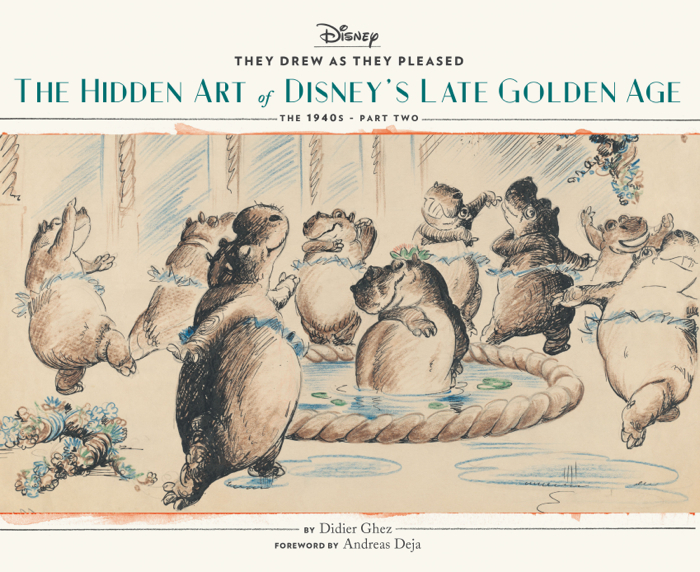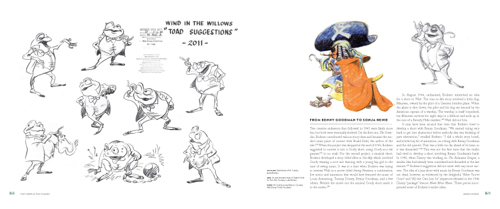Book Review: “They Drew as They Pleased: The Hidden Art of Disney’s Late Golden Age”
They Drew as They Pleased: The Hidden Art of Disney’s Late Golden Age is the third in a series of what will be six books by Disney historian Didier Ghez, whose work I first read when visiting Disneyland Paris for the first time in 2002 – I hauled six or seven of the massive Disneyland Paris: From Sketch to Reality books from Paris that year for myself and friends. 15 years later, Ghez has been a book research and writing machine, not only with this series but other books as well (and he finds time to write on his blog). The first books in this series are They Drew as they Pleased: The Hidden Art of Disney’s Golden Age and They Drew as They Pleased: The Hidden Art of Disney’s Musical Years (The 1940’s – Part One) – all from Chronicle Books. And I am delighted that this book (releasing October 10th) is the second book I have reviewed in the past two weeks that has (by far) exceeded my expectations. The foreward is by longtime Disney animator Andreas Deja, giving a very nice overview of what is in the book.

They Drew as They Pleased: The Hidden Art of Disney’s Late Golden Age: The 1940’s-Part Two, by Didier Ghez, Foreward by Andreas Deja, published by Chronicle Books
They Drew as They Pleased: The Hidden Art of Disney’s Late Golden Age is a comprehensive read with hundreds of rare drawings within the pages. The book profiles six artists who were part of the Character Model Department in the late 1930s and early 1940s as Snow White was wrapping up and Walt Disney was looking for new projects and more creativity. The artists chosen for the Character Model Department were able to “draw as they pleased”, in any form or medium they chose as they focused on character development. It contrasted sharply with the day-to-day work of most animators and created some tension at the studio.

Pages 168-169. (Left) – Model sheet of Mr. Toad by James Bodrero. (Right) – Early design of Captain Hook from “Peter Pan” by James Bodrero.
The six artists – Eduardo Sola Franco, Johnny Walbridge, Jack Miller, Campbell Grant, James Brodrero, and Martin Provensen – had vastly different backgrounds, different animation styles and ended up working in this freestyle and short-lived department. We learn about each artist’s background and a little about their lives in the book, with the most memorable profile for me being of Eduardo Sola Franco. He was brought to Disney to work on the never-made Don Quixote project. He was immensely talented and creatively seemed an excellent fit for Disney, but collaboratively he was not. The letters in the book to his mom showcase the variety of moods he went through while working at the studio, at some points excited to be what he thought was leading Don Quixote to eventually realizing that his lofty hopes weren’t ever going to come to fruition. He was able to produce artwork at a fast clip and seemed to burst creatively in ideas – including for Peter Pan. It would have been interesting to see what he could have done for the studio had they found a way to fold him into the environment. This is just one profile of six, just in a nutshell – it’s worth buying the book to learn about each of these artists in way more depth than I can write in a review. And while not all of the artwork would be recognizable as “Disney”, a lot of the concept art in the book is identifiable as such.

Page 75 – Character design by Johnny Waldbridge for one of the clowns in “Dumbo”.
They Drew as They Pleased: The Hidden Art of Disney’s Late Golden Age is an engrossing read, one that kept me busy for hours while reading the profiles and perusing the photos. There is even a fun picture of Bela Lugosi as a Chernabog reference. I recommend this one highly for those interested in Disney history.
This review contains affiliate links.
